
When Simpson Strong-Tie began supporting the use of iPads by employees, it was about the same time my Blackberry contract was expiring, so I decided to go all-in with Apple® and get an iPhone® 4s and an iPad®. Since mobile devices will not replace the heavy lifting required from most engineers’ computers, I wanted to find some apps that complemented my PC use and made me more efficient when I was away from my desk. After reading reviews and trying out a few, I eventually came up with a list of apps that I recommend. None were developed for engineers, but they are the ones I use most often. Let me know what you think of these or any of your favorites that I missed.
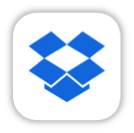
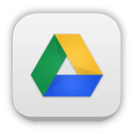
1. File Sharing Apps: My initial search was for a way to share files between my Apple devices and my PC. Since there is limited space in the free cloud services, I use two: Dropbox (free) for work files and Google Drive (free) for home files. Install the apps on your mobile devices and the software on your computers, create and log into your account, and you are ready to access/modify/share any of these files on any device. Both of these apps are seamlessly integrated into many other apps.
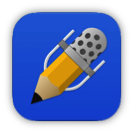
2. Organization: I am not the most organized person, so I wanted an app that would help me keep track of my many notes. After trying a few different ones, I settled on Notability ($3). I can take handwritten or typed notes, insert a picture of things like a jobsite photo or a paper handout, draw a sketch, or even insert an audio recording. Best of all, I can organize the notes in folders within the app and also back them up as PDF files to Dropbox.
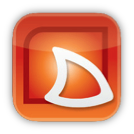
3. Presentations: I regularly give PowerPoint presentations, so I started using an app called SlideShark (free) and got hooked. It is simple and remains true to the look of the original PowerPoint program. With the current version, I can access files on my DropBox account, play embedded videos, and use my iPhone as a remote when my iPad is connected to a projector. Although I still present with my trusty laptop most of the time, SlideShark is also great for practicing a presentation on a mobile device anywhere you find yourself with a few spare minutes.
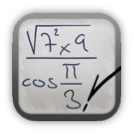
4. Calculator: I was shocked to find that my iPad didn’t have a built-in calculator app. I tried a few free ones, but never really liked them. Then MyScript Calculator (free) came out last year, which solves handwritten equations like the one shown in the icon. Now I look for reasons to use it. It won’t ever replace my TI-85, but I am not sure I want it to.
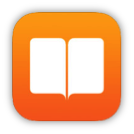

5. Reference Guides: I like the idea of having electronic versions of my codes and referenced standards all saved in my iPad. Some of the PDF files I purchased allow me to save them in iBooks (free); others shown in the screenshot are just covers. On a side note, ICC has all of their codes online, broken into sections (as opposed to a single PDF). It’s great for sending links of specific code language to people that don’t own the code.
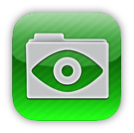
6. Editor Apps: There are tons of PDF editing apps out there. I asked around to see what other engineers use and decided on GoodReader ($5). I have been pretty happy with it, mostly using it to mark up PDF files I am reviewing.
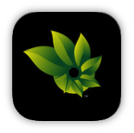
7. Photos: When out on a jobsite, there is no better way to capture information than with a picture. But when everything can’t fit inside the viewfinder, PhotoSynth (free) is a great tool to capture the surroundings. Immersive 360° images can be posted online, shared, or viewed within the app. Here are links to a couple of mine: Hurricane Sandy, Columbus Test Lab.
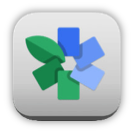
8. Photo Editing: While on the topic of photos, I use Snapseed (free) whenever I need to edit them. It is simple and intuitive, but powerful enough to get the job done.
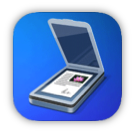
9. Scanner Pro ($3) turns your camera into a scanner. Take a picture of a paper document, then locate the corners of the paper within the app and turn it into a PDF file that scales and stretches it to look like a scan instead of a snapshot.
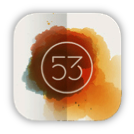
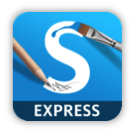
10. Sketch Apps: My favorite apps for sketching a new connector idea, illustrating a concept or just doodling, are Paper (free) and SketchBook Express (free). Paper is more free-form and natural, while SketchBook has more tools and provides more precise control. They are free, so give them both a try.
*Apple, the Apple logo, iPhone and iPad are trademarks of Apple Inc., registered in the U.S. and other countries.*
What are your thoughts? Visit the blog and leave a comment!/p>


Great Post! I always like to see what other engineers are doing to stay current with technology and have been wondering about apps myself. I hope the various structural codes begin to create iPhone and iPad friendly versions of their codes, so code apps will replace cumbersome PDFs!
As an RPN calculator user, I have to give a shout out to “42s RPN Calculator” by Byron Foster. Its a great port of the HP 42s, but with additional features such as an infinite stack that make it even better than the original venerable HP 42s. Its definitely my “Go-To” calculator app:
https://itunes.apple.com/us/app/42s-rpn-calculator/id301525577?mt=8
Also, no list of Engineering Apps could be complete (in my opinion) without at least mentioning AutoCAD 360. The ability to open and red-line AutoCAD files from my phone is certainly worthy of a mention:
https://itunes.apple.com/us/app/autocad-360/id393149734?mt=8
I am also really surprised that a Simpson Strong-Tie post on apps didn’t mention their own literature library app, which is also highly useful in the field (does this bracket take SD9 or SD10 screws? Solved by a quick check of the app):
https://itunes.apple.com/us/app/literature-library/id556964828?mt=8
Thanks for the reminder about our own apps, Peter. We do offer some great tools in terms of apps for engineers here at Simpson Strong-Tie. We wanted to share external apps that may be useful for engineers versus our own internal tools. We didn’t want to seem like we were tooting our own horn too much!
Literature Library post from November: http://seblog.strongtie.com/2013/11/simpson-strong-tie-literature-at-your-fingertips/
Hi Peter, I agree about AutoCAD 360. It’s a great app and even seems less buggy than the AutoCAD installed on my PC. It would have been #11 on my list, possibly tied with PlanGrid (which is useful for teams working off of PDF construction documents). But ever since I got a widescreen monitor, CAD-work on anything smaller makes my head hurt. That said, work will find you wherever you are and Autodesk delivered a very well designed app for the industry.